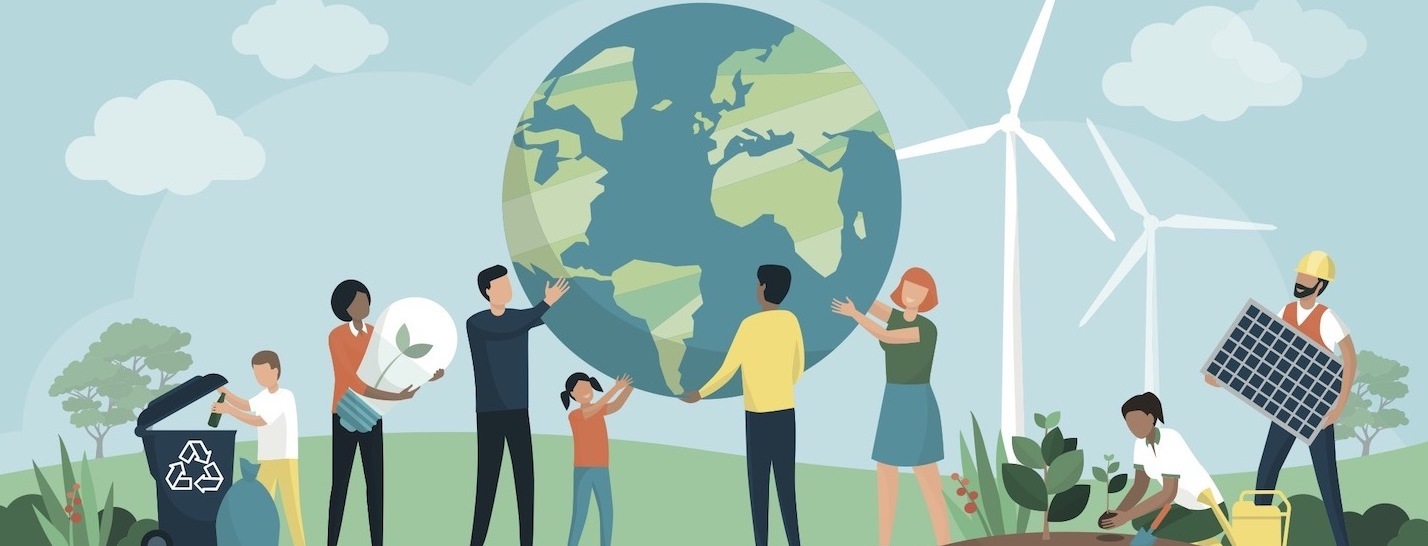
What comes to mind when you think about plastic? You may think about how convenient it is when you pick up your takeout order and don’t have any dishes to clean. You may consider how cheap it is when you purchase new cleaning products for your home. You may even wonder at the physical properties that make it applicable for so many different uses – from toys to life saving medical equipment. And in a perfect world plastic would have controlled, designated, and appropriate uses. However, you are also likely to be reminded of the devastation it can cause in our natural environment – from choking and starving animals to microplastics in our water supply.

Plastic starts in the ground as a fossil fuel, mainly oil and gas. The process of extracting and refining fossil fuels is one of the most energy-intensive industries, releasing millions of tons of greenhouse gas emissions. Does the term “greenhouse gas” ring a bell? That’s because the inordinate amount of greenhouse gases that are being released into the environment is the main culprit behind – you guessed it - climate change. These gases, like carbon dioxide (CO2), become trapped in our atmosphere and warm the climate, much like a greenhouse. This rapid change in climate is melting glaciers, rising sea levels, and causing more extreme storms. But it doesn’t stop there. Once plastic is made it needs to be transported over long distances, molded into products and then transported again to the point of sale where it will once again travel to the consumer. Once we get a hold of it, the toxic chemicals within plastic may be released into our homes and bodies. Finally, we dispose of it where it will most likely end up sitting in a landfill, burned in an incinerator, or polluting the environment. Regardless of where it ends up, it is guaranteed to release more greenhouse gases, including methane which is 84 times more potent than CO2. To learn more about the entire lifecycle of plastic and how it contributes to environmental racism, check out this post.

Although the problem is complex, the solution is quite simple - make less plastic. But unless you happen to run a major fossil fuel company or lead a corporation that purchases plastic for its products, this call to action may not resonate with you. In this case, the important thing to remember is the law of supply and demand. At the end of the day, us as consumers hold a great deal of power through our demand. When we purchase a product, that causes the demand to increase which in turn signals more of that product to be supplied. But if we, as a collective community, decide to stop purchasing unnecessary stuff, the demand goes down and the supply must follow. Alternatively, when we invest in more sustainable and reusable products, the demand goes up which encourages a greater supply to be produced, leading to more competition which will make those products more affordable and mainstream over time. But this won’t happen on its own. We need to do what we can to influence the trend by making one conscious purchasing decision at a time.
Thankfully, it’s not just up to us. Policymakers can support this transition by banning unnecessary and dangerous single-use plastic, halting the development of new extraction sites and refineries, making companies pay for the pollution their products create through Extended Producer Responsibility, and incentivizing innovation product designs through government subsidies. All of this and more is outlined in the federal Break Free From Plastic Pollution Act so be sure to show your support today!

This is an exciting and transformative time to be a member of American society. We can choose to no longer believe the ads that tell us we need the next hottest fashion trend (spoiler alert: it will be shockingly similar to items from your wardrobe from 20 years ago.) We can decide to value health over convenience by challenging the fast-paced culture of consumerism. Small steps like supporting our local farms and cooking a meal for our family versus inhaling fries as we pull out of the drive-through will not only make us healthier, they will bring joy and meaning back to our lives. The extra time spent in the kitchen, enjoying a meal with loved ones, and slowing down to recognize the beauty in every moment will not be time wasted. For those nights when you simply cannot find the time or energy to cook (we’ve all been there more often than not) you can order from a local Ocean Friendly Restaurant and rest assured knowing your meal will be prepared and packaged with sustainability in mind.
Our daily decisions, together with supporting plastic reduction policies, will directly serve to restore our natural environment, protect our personal health, and curb the global impacts of climate change. Taking a stand against plastic is standing up for our climate.
